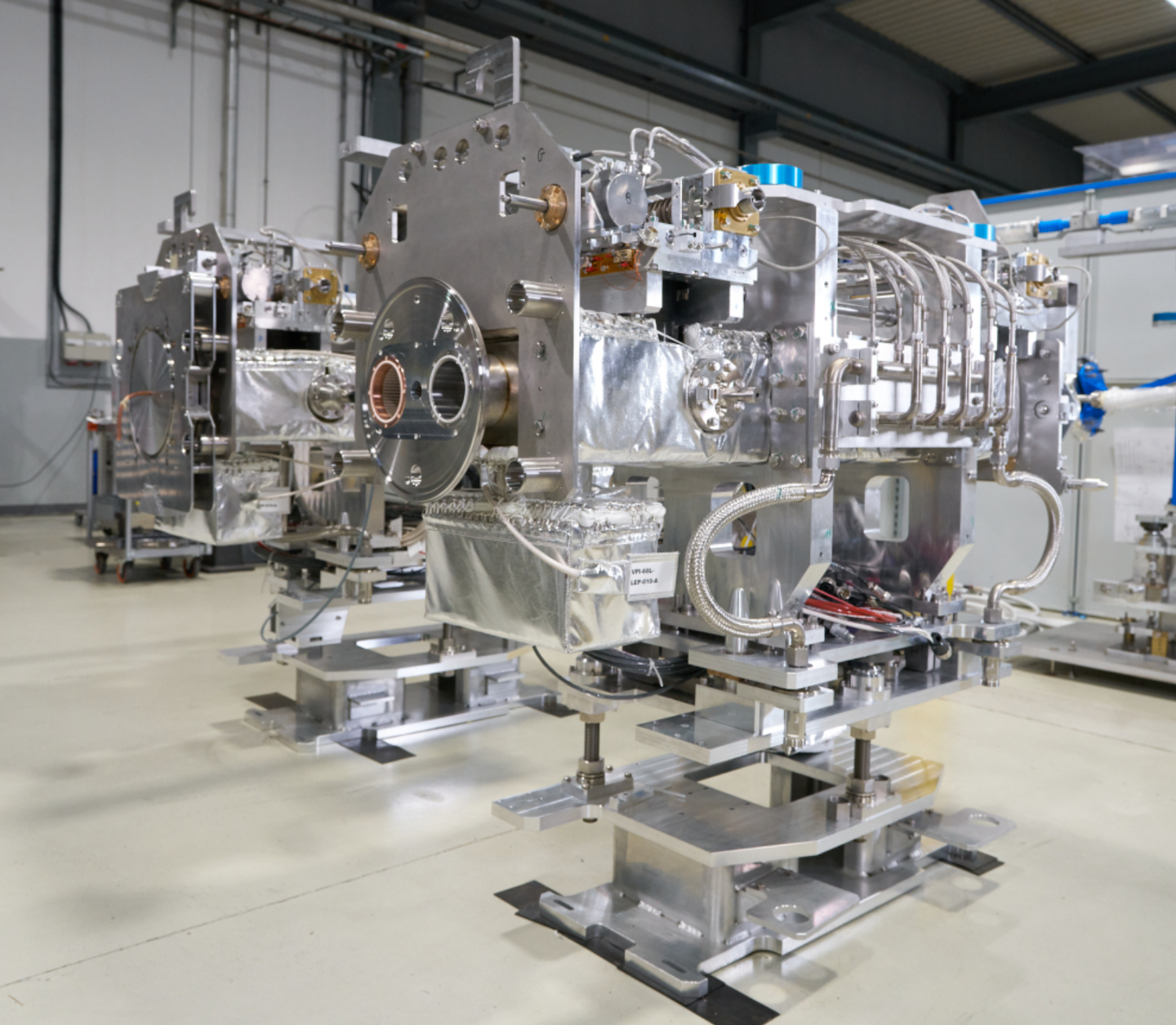A major upgrade of the collimation system of the Large Hadron Collider (LHC) began during the first long shutdown of CERN’s accelerator complex (LS1, 2013–2015) and continued during LS2 (2019–2021), in preparation for the High-Luminosity LHC (HL-LHC). As its name suggests, the HL-LHC will surpass the LHC in terms of luminosity, i.e. the number of collisions that take place within the LHC experiments. The accelerator’s equipment therefore requires enhanced protection, which is where the collimation system comes in.
What is a collimator?
Collimators are movable blocks made of materials that can absorb particles. Shaped like jaws, they close tightly around the beam to clean up particles that stray from their path. The materials used for these jaws and their various components are capable of withstanding extremes of pressure and temperature, as well as high levels of radiation.
Why do beams need cleaning?
Particles that stray from the beam path could collide with sensitive accelerator components, such as superconducting magnets, and interfere with their operation or, in the worst case, damage them. To prevent this from happening, collimators are placed at strategic locations around the LHC ring, where they either absorb stray particles or deflect them towards beam dumps. Protection is particularly crucial in the vicinity of the experiments, where the beam size is reduced to increase the chances of collision.

The LHC currently has 118 collimators of different kinds. The future HL-LHC will have 126 collimators, including brand new models custom made at CERN. Recently, two new prototypes (TCLPX and TCTPXH) have been successfully developed and tested, under the supervision of François-Xavier Nuiry, engineer in charge of the HL-LHC collimator production. Destined for LHC interaction points 1 (ATLAS detector) and 5 (CMS detector), they are double-beam collimators. This optimised configuration enables two beams (circulating in opposite directions) to pass through the same vacuum chamber, thus freeing up space for the collimators’ jaws, which are thicker and more powerful in this location.
“These two prototypes are innovative in several ways,” explains Dylan Baillard, a mechanical engineer in CERN’s Targets, Collimators and Dumps section. “They are fitted with a remote alignment and levelling system, which helps reducing the radiation dose received by the teams working on them. The collimator flanges can be connected and disconnected more easily thanks to integrated connection tools. Finally, ion pumps are used to ensure an excellent vacuum quality because the collimators, which are close to the beams, always operate in a vacuum and must not disrupt the circulation of the beams.”
The final tests were successfully completed in December, and series production of the two new types of collimator should begin this year. Twelve double-beam collimators will be installed in the machine during Long Shutdown 3 (LS3, 2026–2028).

